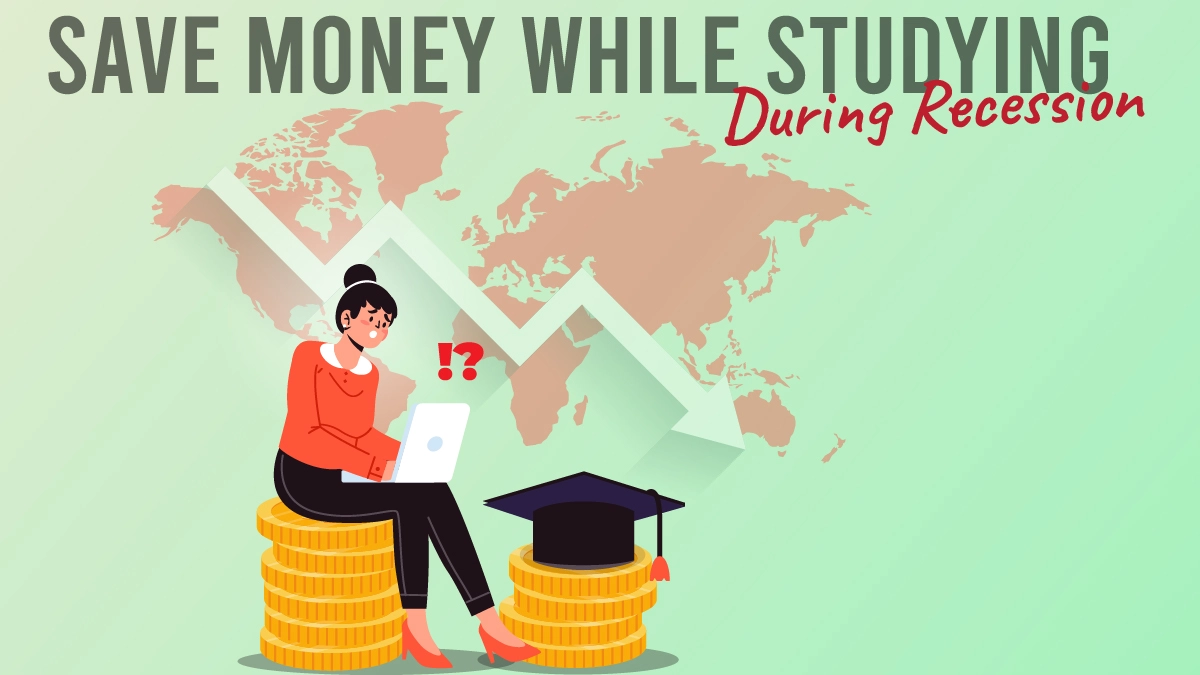https://www.wemakescholars.com/blog/education-loan-interest-rate-from-private-lenders-simplified
Private Banks/NBFCs | Updated

Most education loan aspirants who are unable to secure a collateral education loan, opt for private lenders. On the other hand, some of the applicants apply for education loans through private lenders just because of their faster processing time. If you fall in either of these categories or if you are a student who is looking for answers regarding the education loan interest rate policies of such private lenders, then this article is for you.
Or better yet, watch the 12th episode of Loanflix, ‘Education loan interest rate: Simple or Compound?’, where the co-founder of WeMakeScholars and the speaker of this episode, Damini Mahajan, explains to you certain tricky areas of the education loan interest rate terms of private lenders.
While researching on education loans, the interest rate is the most common parameter that most applicants check thoroughly. But despite reading the education loan interest rate terms and conditions of private lenders carefully, at times, most of the applicants tend to miss out on the hidden meaning behind every single sentence.
Simple interest and compound interest are two terms that one keeps hearing repeatedly. Before getting into the details, let’s take a look at the exact definition of these terms with respect to education loans. We request you to read this article very carefully because the information that will be provided will open your mind regarding student loan interest rate. So grab a notepad and write away!
What is Simple Interest? How do Lenders use it To Calculate Education Loan Interest?
A simple interest levied on your education loan amount means that the interest will only be charged on your principal loan amount.
So, Simple interest = Principal amount + Accumulated interest amount.
Let’s understand the concept with the help of the following example:
Your education loan amount is Rs. 10 Lakhs, and the rate of interest is 10% p.a. for a period of 5 years. A 10% simple interest on Rs.10 Lakhs comes to Rs.1 Lakh as interest amount for a year. So, at the end of 5 years, the total loan amount would come to; Rs.10 Lakhs (Principal)+ Rs.5 Lakhs (accumulated interest amount) = Rs.15 Lakhs. Now let’s understand compound interest with respect to education loans.
What is Compound Interest? How Do Lenders Calculate Education Loan Interest using Compound Interest?
A Compound interest levied on your education loan amount means that additional interest will be charged on your accumulated interest amount and the principal amount.
So, compound Interest = Interest on (Principal amount + Accumulated interest amount).
Let’s try to understand this concept in terms of the same example as above.
You borrowed an education loan of Rs. 10 Lakhs at 10% p.a. for a period of 5 years. According to the compound interest terms, with annual compounding, the interest amount for the first year will be calculated as:
Rs.10 lakhs (Principal loan amt)+ Rs.1 Lakh (accumulated interest for one year) = 11 Lakhs (1st year)
Rs. 11 Lakhs + Rs.1.1 Lakh (including annual compounding)= 12.1 Lakhs (2nd year)
Rs.12.1 Lakhs + Rs. 1.21 Lakhs (annual compounding) = 13.3 Lakhs (3rd year) And so on and so forth. So, by the end of the 5th year, the student ends up paying Rs. 16.1 Lakhs as the total loan amount.
Read More on Education loan interest rates – Comparison between public and private sector banks in India
How private lenders mislead you by utilizing ‘simple interest’ in their conditions
Now that your basic concepts regarding simple and compound interest are clear, let’s discuss the first point where people generally go wrong. Let us consider a student who has taken a loan from a private lender that charges education loan interest rate on the basis of compound interest. However, there is an underlying condition for the same. The student has to pay the accumulated interest amount every year. Here is an example to help you understand this concept better.
A 10% interest rate on a loan of Rs. 10 Lakhs for a period of 5 years, brings the interest amount to Rs.1 Lakh per year. Let’s assume that the student pays the accumulated interest amount of Rs.1 Lakh without any delay in the first year. According to the private lender, there won’t be any compound interest levied on the loan amount in the first year as the accumulated interest has been paid without delay. Then next year again, interest will be levied on the same amount, i.e. Rs.10 Lakhs because the student has paid the accumulated interest amount of the previous year.
If this is the case then according to the conditions laid down by the respective private lender, no compounding of interest rate should happen, right? So does this mean that the student is still paying the interest amount on a simple interest basis? This is the first instance of how private lenders trick their loan applicants by misusing the concept of simple interest. Next up, we take an example of the terms and conditions of one of the leading NBFCs in India and point out how they have been using the term ‘simple interest’ to suit their policies, thus misleading their loan applicants in the process.
HDFC Credila education loan interest rate terms
HDFC Credila is one of the biggest NBFCs in India. They specialize in lending education loans to those in need. Let’s take a look at the answers they’ve provided in the education loan repayment-related FAQs section of their website. This is just an example. Many NBFCs in India mislead their clients on similar lines.
HDFC Credila is one of the biggest NBFCs in India. They specialize in lending an education loan without collateral to those in need. Let’s take a look at the answers they’ve provided in the education loan repayment-related FAQs section of their website. This is just an example. Many NBFCs in India mislead their clients on similar lines.
Observe the above image closely. It is a screenshot of the loan repayment FAQs page of the HDFC Credila website. The question is regarding the partial payment of interest /payment of least interest amount feature provided by HDFC Credila and other NBFCs for education loans.
Let’s analyze Credila’s answer to this question. If you may read the answer closely, it has been written that ‘HDFC Credila offers simple interest rates’. And in the very next line below, they also mention that, ‘HDFC Credila thinks that it's helpful for the students not to pay interest on interest. Therefore, HDFC Credila products require at least the interest payment on the loan during the study period.’
Please read these lines again, and you will understand how they have contradicted their own statement. Read the second line again. What they actually mean to convey through these lines is that loan applicants are asked to pay the interest amounts in order to avoid the compounding of interest amount at the end of their academic year.
Now, take a look at this statement, which is a part of the same answer, 'Compounding of interest adds financial burden and unnecessarily parents and students have to bear a large burden of interest on interest'. Here’s the tricky part. Credila does not explicitly state that ‘We charge only simple interest and not compound interest’. Instead, they have very conveniently used these terms to their benefit.
The hidden meaning behind the above statement is that if the loan applicant fails to pay the interest from time to time, the accumulated balance will be added to your principal amount at the end of the first academic year. Which, indirectly is compound interest! Do you see how misleading this statement can be? It is not just Credila, most of the private lenders trick clients in this manner.
Read More on HDFC Education loan: Interest rate and its Pros and Cons
Partial interest payment of Private lenders
Coming to the partial interest payment policy of HDFC Credila, this feature was introduced by Credila to facilitate students who have to pay higher amounts than usual, as interest. They have considered the fact that such students may not be able to make full payment of their interest in one go. Hence, Credila accepts these interest amounts in installments.
The main talking point about this feature is that when a student only pays the partial interest, how does Credila compensate for the rest? The answer is given by them in the above lines. This difference amount is automatically accumulated and is compounded to your principal amount. Let’s understand this with the help of an example. I am taking a relatively smaller amount as an example for better understanding.
When the actual interest to be paid is Rs. 12,000 per month, Credila representatives give you an offer to pay the partial interest of only Rs. 5000 every month. In this case, every month, the difference amount of Rs. 7000 is automatically added to the next month’s principal. This is exactly how compound interest works! But on the other hand, let’s assume that the student manages to pay the entire interest amount every month. In that case, there won’t be any amount left to add to the next month’s principal as compound interest.
This is exactly what Credila conveys through this statement, 'Therefore, HDFC Credila products require at least the interest payment on the loan during the study period'. We hope that by now, you have clearly understood how, just like HDFC Credila education loan interest rate terms, private lenders utilize simple interest to make education loan interest rates seem less complicated, whereas their motive behind these statements is something else.
There’s More to it!
If the above revelations have made you think that private lenders stop at annual compounding on your interest amount, here’s one more fact.
Many private lenders also apply compound interest to your education loan interest rate, on a monthly basis. If this is the case then a compound interest will be levied on your principal loan amount, monthly. If this happens then your repayable loan amount will go even higher. Let us take another look at the HDFC Credila education loan interest rate conditions.
Although Credila does not tell you the exact way in which they calculate the interest amounts, they have given a small indication in the following statement (as shown in the pic taken from the website of HDFC Credila) which is an answer to how they calculate the interest amount, Credila has provided the following answer, ‘Interest may be calculated on daily, monthly or yearly reducing principle basis’. This means that they may not follow a uniform method while calculating the interest. This is done as per their policies.

We understand that it might take some time for you to fully process the information given in this article. If you are stuck at any stage of your education loan process with an NBFC or a public bank, or if you plan to apply to one, do request a callback. Our financial officers will get in touch with you to provide you with the necessary support. Since WeMakeScholars is a just-not-for-profit initiative, aided by the Ministry of I.T., Govt. of India, we ensure utmost transparency in our process, with no additional charge for our services.
Who actually accepts interest payments on a simple interest basis?
By this point in the article, I am sure this question has arisen in your minds. Don’t worry. The education loan interest rate calculation of most of the government banks is done on a simple interest basis. As opposed to private lenders, public banks calculate your monthly interest amount purely on a simple interest basis during the moratorium period (i.e. Course duration + 6 months after the course).
And also, if an applicant borrows an education loan from a public bank, he/she doesn’t even have to start paying the interest amount until after the moratorium period. You still stand to benefit from this factor. Take this for an example. Eg. If you apply for Rs.10 Lakhs loan from a public bank at a 10% interest rate p.a. Then at the end of 2 years, you still end up paying back Rs.12 Lakhs only, (Principal amount + Simple interest @10%p.a.)*2. Pretty simple and straightforward, right?
Conclusion
When you decide to approach private lenders, keep a close check on their education loan interest rate terms and conditions. They will try to make it look like their interest rate policies are at par with public bank terms. However, by now you know that’s not the case. Know more on how you can catch these private lenders fooling you by watching the 12th episode of the Loanflix series. Our expert tells you a very simple hack on how to do it. If you do like this episode, don’t forget to watch all the previous episodes of Loanflix, a comprehensive web-series on education loans and more.
Now that you've got a hang of the education loan interest rate terms and conditions, what do you do if you have borrowed an education loan from a very expensive lender and now you want to reverse your decision? How do you do it? Stay tuned for our next article, which will tell you all about the Education loan takeover.
Speak with our financial officer to get help and assistance. Also, check your eligibility for the best education loans matching your profile.
Note: WeMakeScholars is an organization funded and supported by the Government of India that focuses on International Education finance. We are associated with 10+ public/Pvt banks/ NBFCs in India and help you get the best abroad education loan matching your profile. As this initiative is under the Digital India campaign, it’s free of cost. The organization has vast experience dealing with students going to various abroad education destinations like the US, Canada, UK, Australia, Germany, Sweden, Italy, China, France among others.





Naresh Kumar Scholarship Expert
Scholarship Expert
Apurva Thengre Scholarship Expert
Scholarship Expert
Naresh Kumar Scholarship Expert
Scholarship Expert
Apurva Thengre Scholarship Expert
Scholarship Expert
Naresh Kumar Scholarship Expert
Scholarship Expert
Neetisha
Admin Wemakescholars Scholarship Expert
Scholarship Expert
Apurva Thengre Scholarship Expert
Scholarship Expert
Neetisha